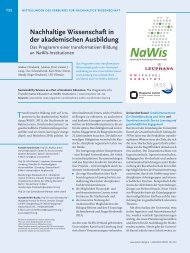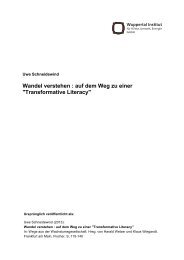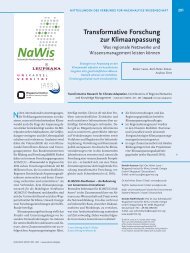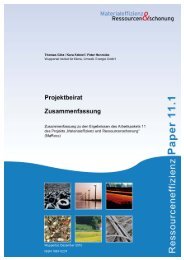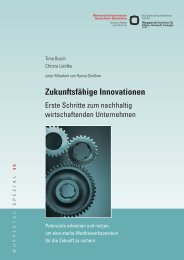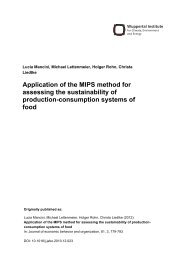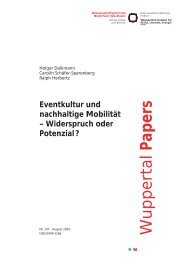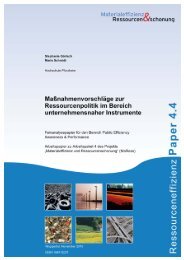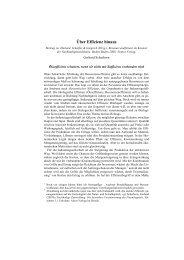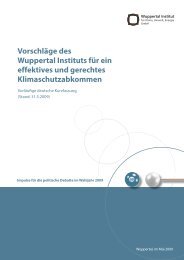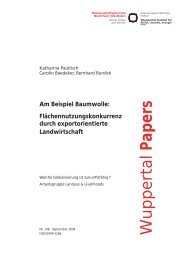Resource Efficiency Atlas - Publication Server of the Wuppertal ...
Resource Efficiency Atlas - Publication Server of the Wuppertal ...
Resource Efficiency Atlas - Publication Server of the Wuppertal ...
You also want an ePaper? Increase the reach of your titles
YUMPU automatically turns print PDFs into web optimized ePapers that Google loves.
56<br />
Examples for resource efficiency | Products | Buildings and Housing<br />
Products<br />
Textiles IT and Communication Food Transport and Traffic Buildings and Housing Optics<br />
Straw instead <strong>of</strong> concrete – resource-efficient buildings<br />
S-House – Building with factor 10<br />
Innovative building concepts should consider <strong>the</strong> energy demand as well as <strong>the</strong> lifecycle-wide<br />
resource requirements. Instead building with resource intensive materials, here, straw is used<br />
as building material.<br />
Demonstration building S-House (Source: GrAT)<br />
The construction sector is an economic sector with high<br />
energy and resource requirements. Along <strong>the</strong> construction<br />
lifecycle <strong>the</strong> phases “raw material production”, “building<br />
material production” and “use phase” have turned out to be<br />
especially resource-intensive. Of central importance to <strong>the</strong><br />
construction <strong>of</strong> new buildings and renovation is <strong>the</strong> planning<br />
phase, where strategic material selection can steer <strong>the</strong><br />
material intensity <strong>of</strong> all remaining lifecycle phases. While<br />
energy-efficient construction is being already exercised in<br />
practice, aspects <strong>of</strong> resource protection <strong>of</strong>ten still remain<br />
unnoticed.<br />
Ressourceneffizienzatlas<br />
<strong>Resource</strong> <strong>Efficiency</strong> <strong>Atlas</strong><br />
The Austrian group ’’Angepasste Technologie“ (GrAT) managed<br />
to reduce <strong>the</strong> lifecycle-wide resource requirements<br />
in comparison to customary buildings by a factor <strong>of</strong> 10<br />
through <strong>the</strong> construction <strong>of</strong> a demonstration S-HOUSE<br />
building. Within <strong>the</strong> framework <strong>of</strong> <strong>the</strong> program line ’’house<br />
<strong>of</strong> <strong>the</strong> future“, an integrated concept was developed, which<br />
connects all relevant aspects <strong>of</strong> sustainable construction.<br />
In addition, <strong>the</strong> straw bale construction, <strong>the</strong> elementary<br />
concept for <strong>the</strong> S-HOUSE, is also economically interesting.<br />
The demonstration building shows <strong>the</strong> compatibility <strong>of</strong> traditional<br />
building materials with innovative constructions<br />
to normal passive house costs. During <strong>the</strong> deconstruction<br />
phase <strong>the</strong> building materials can be easily separated and,<br />
<strong>the</strong>refore, reused. The building design <strong>of</strong> <strong>the</strong> S-HOUSE and<br />
used components correspond to current needs <strong>of</strong> users<br />
without consigning disposal problems to future generations<br />
or forcing a subsequent use.



